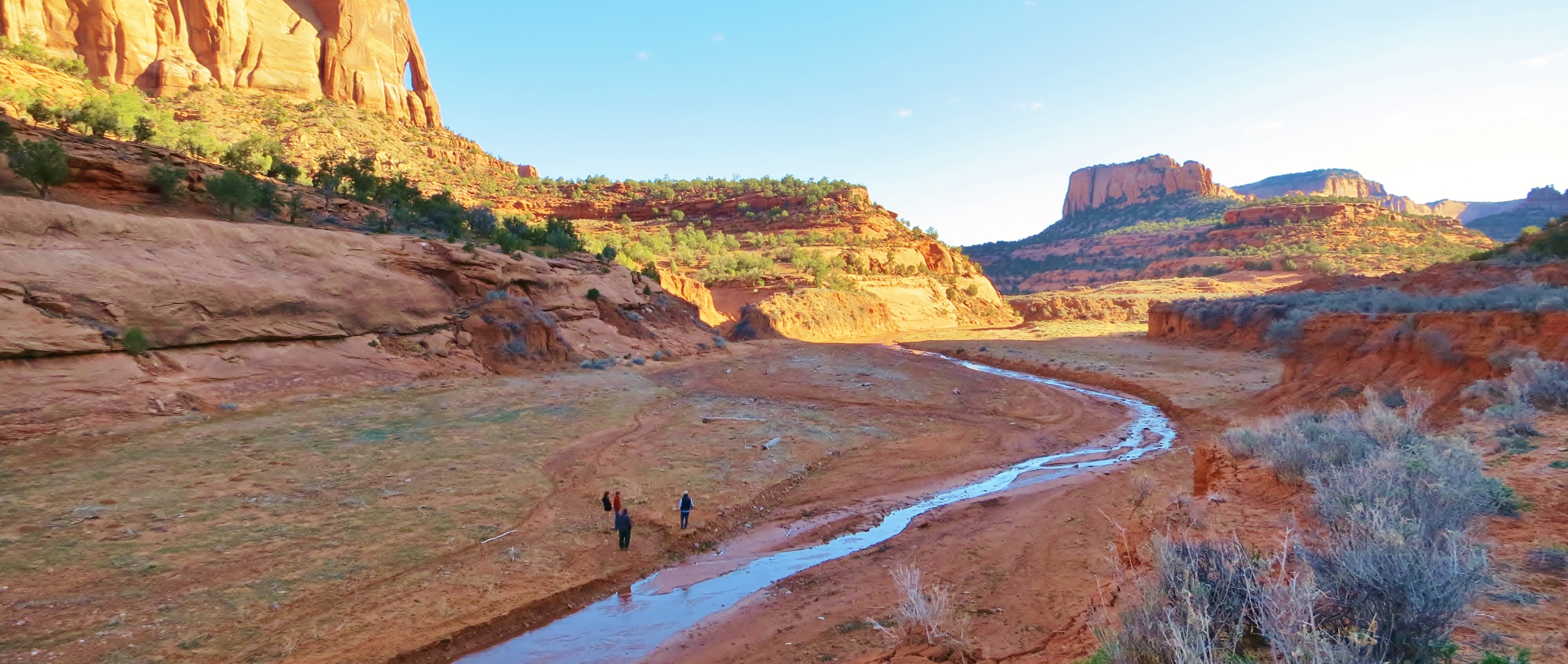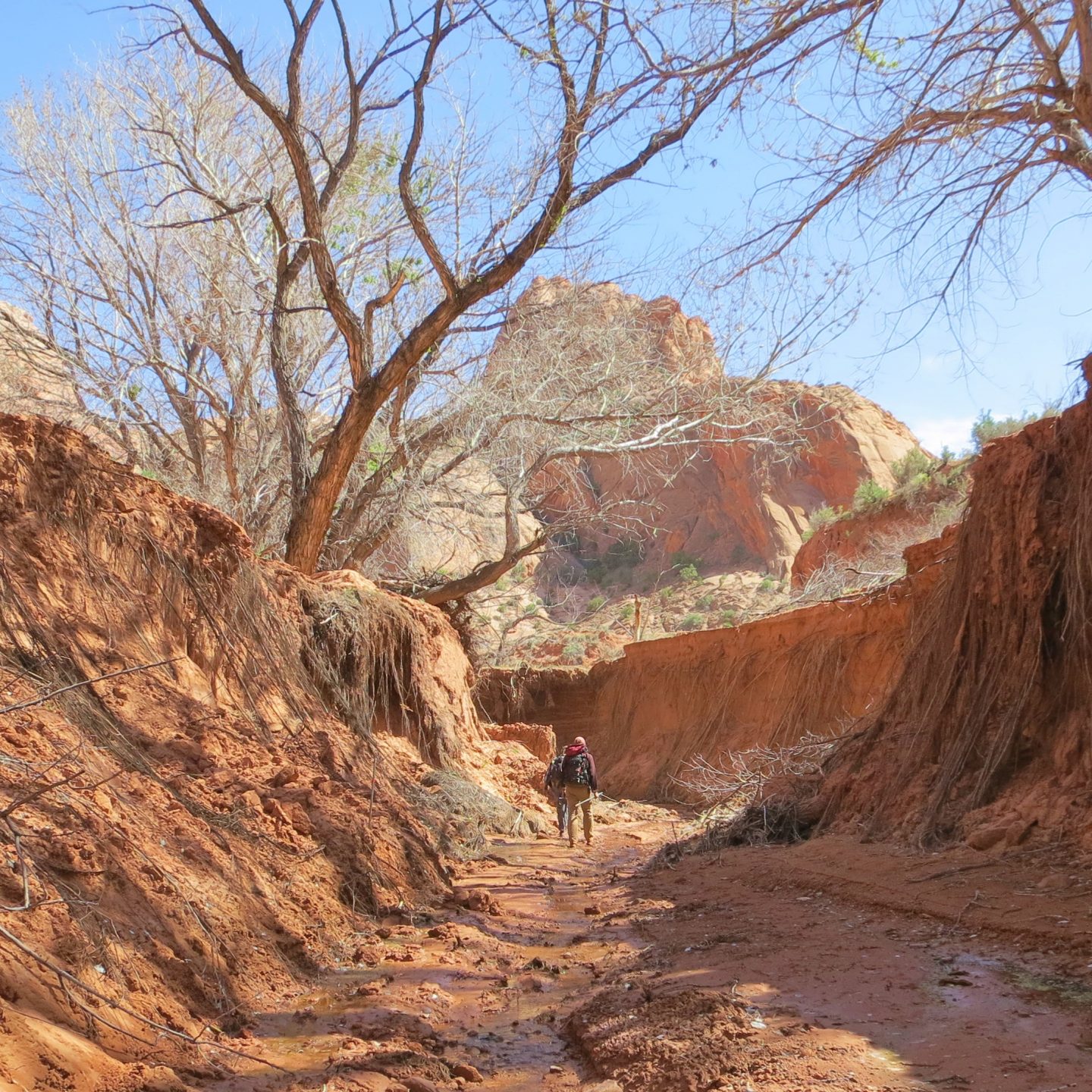

Fred Phillips Consulting (FPC) and Oxbow Ecological Engineering (OEE) collaborated on an assessment and conceptual design for four ecologically and morphologically impaired stream reaches located near Navajo National Monument within the Navajo Nation. The sites are in isolated locations, with challenging access and have high concentrations of culturally sensitive sites. Restoring these reaches requires techniques that minimize excavation and construction access disturbances, minimize impacts on cultural resources, and avoid known cultural resource sites. OEE and FPC visited all sites and conducted detailed surveys to establish key baseline parameters, including existing vegetation, water & soil quality, groundwater depth, hydrological parameters, and channel morphology and topography. As part of the assessment,
OEE completed Rosgen Level II geomorphic analysis including long profile and cross-sections, topographic surveys, pebble counts, and bar samples for the reaches. This information formed the foundation of the concept design, which included the development of a low impact stream and riparian restoration “toolbox”. This “toolbox” included conceptual native revegetation planting plans and planting lists and bioengineering and low impact stream stabilization techniques, including post, brush, and boulder vanes, j-hooks, and cross-vanes, one rock dams, step pools, Zuni bowls, and head-cut arresting
treatments (rock step, log run-down, and revegetated geotextile sand bags). This concept was integrated into an overall grazing management plan and presented to cooperators and grazing permit holders for comment.

